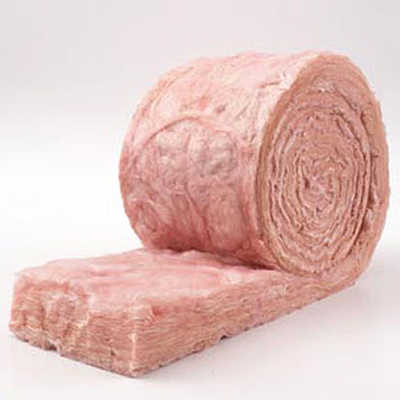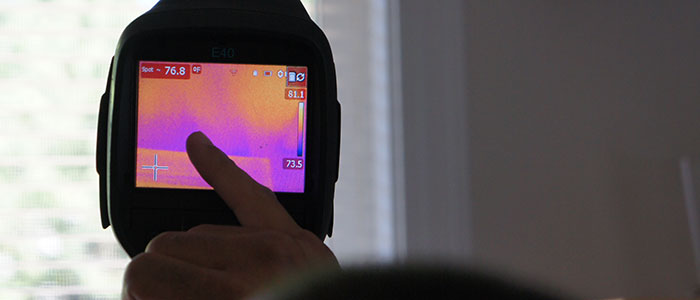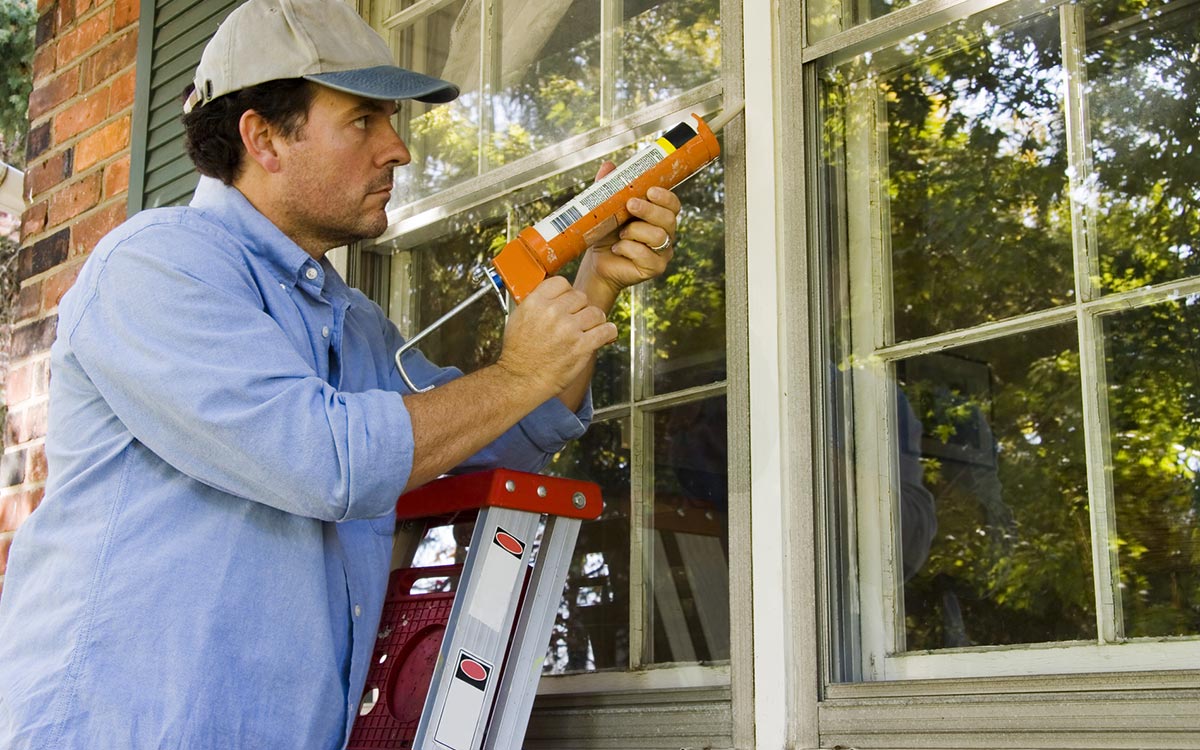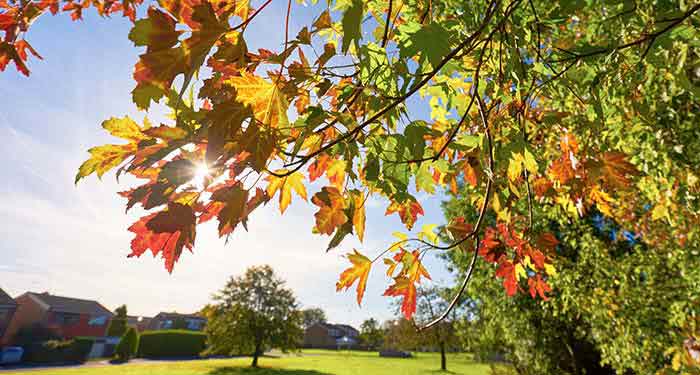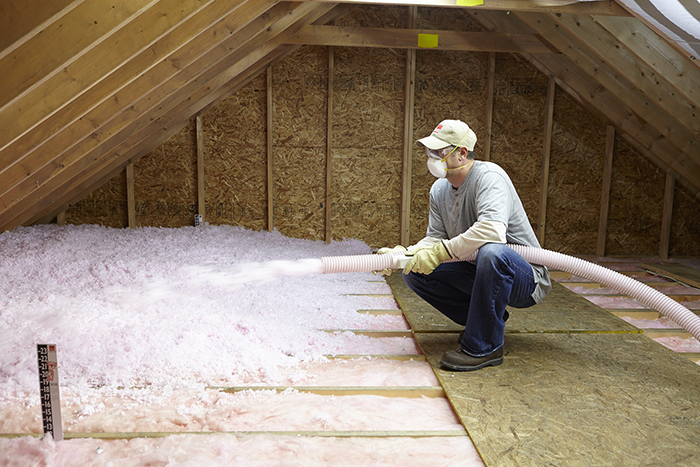
Tips for safely insulating your home
Insulation is an important part of reducing energy bills and increasing comfort. But did you know that you can create safety issues in your home if you do not install insulation correctly? Here are three tips to installing proper insulation so you can avoid:
- Carbon monoxide poisoning
- Moisture problems and mold
- Fire hazards from lighting
1. Be sure to conduct carbon monoxide tests on appliances before insulating and air sealing your home, especially in homes with natural gas. On a recent home energy audit, Washington Energy’s home performance team discovered unseen carbon monoxide coming from an old gas water heater. With a drafty house, and the water heater in the basement, it wasn’t enough gas to trip the CO detector in the main part of the house. However had the homeowner installed full insulation and air sealed the house without knowing, they may have locked in that gas and exposed their family to high levels of carbon monoxide.
2. Prevent moisture problems by letting your house breathe. In the previous article we discussed the relationship between your home and indoor air quality, and we highlighted the need to seal the penetrations bringing unwanted air through your home. But did you know that you can overseal? Most older Seattle homes don’t need to worry about this, but if you have new construction or if you are putting in your own insulation, this is important to consider.
New construction (less than 20 yrs old) has been built tighter – with fewer penetrations than older homes. These homes may actually need added ventilation installed when you insulate, to ensure healthy air inside the home.
To make sure your house is breathing properly, start by ensuring that bath fans are vented directly to the outside. Then when insulating, baffle the soffits! It may sound like pirate-speak but it’s important to keep your vents under the eaves of the roof free and clear for air transfer In layman’s terms: the eave vents are called soffits. Baffles, which are foam or cardboard pieces, fit around the inside of the soffit to keep the insulation from clogging up the vent. If insulation blocks the soffit vents the heat and moisture rising up through your house toward the attic, cannot escape. This will result in condensation forming in the attic and can eventually soak or ruin your insulation plus potentially affect your roof shingles. But most importantly, it can create the environment for mold and mildew to grow.
A licensed insulation contractor will know where and how much venting will be enough, and how to baffle a soffit too.
3. Insulation and can lights may not mix well. If you have recessed “can” lights, those spotlights commonly built into the ceiling, you may not know that some of them are rated to be surrounded by insulation and some are a fire hazard if they are surrounded by insulation. Inside the light fixture look for the rating stamp IC (insulation contact). IC lamps can contact your insulation safely. If you do not see IC, keep insulation 3 inches away from the light fixture and use a wood or metal barrier to ensure they don’t touch. Consult the manufacturer of the lamps or an electrician, if you have questions about safe installation. There are also specialized boxes that can go over non-IC rated cans so you can air seal the cans without making them a fire hazard. To ensure your cable, wiring and insulation are an appropriate match, please research carefully before installing them yourself.
And one final tip. If you are going to invest in adding insulation, for just a small amount more a home performance contractor can add duct sealing and duct insulation. They will carefully seal the joints in exposed portions of your duct system and then insulate around the ducts. This works to ensure that the heat travelling in your ducts gets to the rooms you need it in. When combined with insulation and air sealing, these three measures can improve home comfort and reduce energy costs by up to 30%.
Washington Energy Services provides home comfort solutions including home energy audits, insulation, air sealing and duct sealing. Washington Energy has been serving Western Washington homes with energy efficient home improvement since 1957. Call for an appointment at 800-398-4663 to learn more.
Related products
Suggested Reading
- 2016
- AC
- AC Installation
- AC Units
- AFUE
- air conditioing
- air conditioner
- air conditioning
- air conditioning maintenance
- air conditioning service
- air conditioning tune-up
- air duct
- air duct cleaning
- air handlers
- air pollution
- Air Purification System
- air purifier
- Air Sealing
- angie's list
- award
- basement Finishing
- Bathroom remodel
- BBB
- BBB Accredited Business
- before and after
- Best air conditioner
- best filters
- best generator
- best locks
- best water heater
- best window install
- boilers
- bryant
- Bryant AC
- bryant furnace
- bryant heat pump
- christmas lights
- clean air
- clothes drive
- Clothes For Kids
- coat drive
- combi-boiler
- comfort
- community
- Construction
- contractor
- contractors
- Cooling
- Cooling equipment
- Coronavirus Protection
- custom
- daikin
- deals
- discounts
- DIY
- Donation
- Donations
- door hardware
- door installation
- door replacement
- Door Transformations
- doors
- drafty home
- drain cleaning
- Duct Cleaning
- Duct Cleaning Services
- ductless
- Ductless heat pump
- ductless heat pump. mini-split
- Ductless heat pumps
- ductless heating system
- ductless heating systems
- ductless installation
- Ducts
- earth day
- eco friendly
- EER
- election
- electrical inspection
- emergency
- energy
- energy conservation
- energy efficiency
- energy efficiency rebates
- energy efficient AC
- energy efficient air conditioner
- energy efficient home
- energy efficient hvac
- energy efficient HVAC Systems
- energy efficient windows
- energy myths
- energy saving
- energy saving home products
- energy star
- energy tax credit
- environmentally friendly
- exterior doors
- fall
- fall weather
- fiber cement
- fiberglass doors
- filter
- filter change
- financing options
- fireplace
- fireplace insert
- fireplace repair
- fireplace tune-up
- front door
- furnace
- furnace filters
- furnace install
- furnace maintenance
- furnace mileage
- furnace problems
- furnace replacement
- furnace service
- furnaces
- Garage door replacement
- gas fireplace
- gas fireplace inserts
- Gas Fireplace Makeover
- gas furnace
- generators
- going green
- good business practices
- green solutions
- Guardian Maintenance Club
- heat
- heat pump
- heat pump installation
- heat pump maintenance
- heat pump vs ac
- Heat Pumps
- heat pumps maintenance
- heat wave
- Heating
- Heating and Cooling equipment
- heating and cooling systems
- Heating Brands
- Heating Control
- Heating equipment
- Heating System Tuneup
- heatwave
- HEPA filter
- history
- holiday
- home
- home buyer
- home energy
- home energy efficiency
- Home energy efficiency solutions
- home exterior
- home heating
- home improvement
- Home Improvement Rebates
- home improvement repair
- home inspection
- home maintenance
- home maintenance checklist
- home maintence
- home performance
- home protection
- home repair
- home safety
- home upgrade trends
- home upgrades
- home value
- homeowners
- honeywell
- hot water
- hot water heater
- houzz
- how to
- HVAC
- HVAC Contractor
- HVAC Contractors
- hvac system
- IAQ
- indoor air quality
- infographic
- install
- install furnace
- insulation
- intellihot
- interior doors
- kids
- Kitchen face lift
- LED light
- LED lights
- light bulb
- light bulbs
- locks
- mailbag
- maintenance
- march
- membership
- mini-split
- modulating furnace
- money saving
- money savings
- navien
- new door installation
- new home
- New homeowner
- new windows
- news
- pacific northwest weather
- patio doors
- pets
- plumbing
- plumbing inspection
- power
- power outages
- precision tune up
- preventative
- Pro Tips
- Programmable Thermostat
- Programmable Thermostats
- propane
- PSE Award
- PSE Energy
- PUD
- Q & A
- Ratings
- rebates
- refund
- REME Halo
- Remodel
- remodeling hacks
- Replacing Heating System
- reputation
- Safe Home Insulation
- sale
- save energy
- Saving money
- scam
- scams
- seattle
- Seattle Weather
- SEER
- service
- services
- Siding
- Siding replacement
- sliding glass doors
- Smart Home
- Smart thermostat
- smoke
- Solar Attic Fan
- solar power
- Solar Powered Light Strand
- sound
- spring
- standby generators
- storm doors
- summer
- summer fires
- Summer heat
- Summer home
- super service 2016
- tank water heater
- Tank water heaters
- tankless tune ups
- tankless water heater
- tankless water heaters
- tax rebate
- thanksgiving
- Thermostat
- tips
- trends
- tune-up
- upgrade
- upgrade cooling
- upgrade heating
- utilities
- utility rebates
- veterans
- Washington Energy
- washington energy services
- water conservation
- Water Heater
- water heater installation
- water heater maintenance
- water heater repair
- water heaters
- water leak protection
- Wildfire Season
- wildfire smoke
- window
- window energy efficiency
- window install
- window maintence
- window remodel
- window repair
- window replacement
- windows
- winner
- winter
- zone heating
- Air Conditioning
- Air Purifiers
- Cooling
- Doors
- Ductless heat pump
- Environmental
- Fireplace
- Furnace
- Gas fireplace
- Generators
- Heat pump
- Heating
- Home improvement
- How to
- HVAC
- Indoor Air Quality
- Insulation
- News
- Plumbing
- Rebates
- Seattle
- Siding
- Smart Home
- Tank water heaters
- Tankless water heaters
- Tips to save money
- Uncategorized
- Wildfire Season
- Windows
